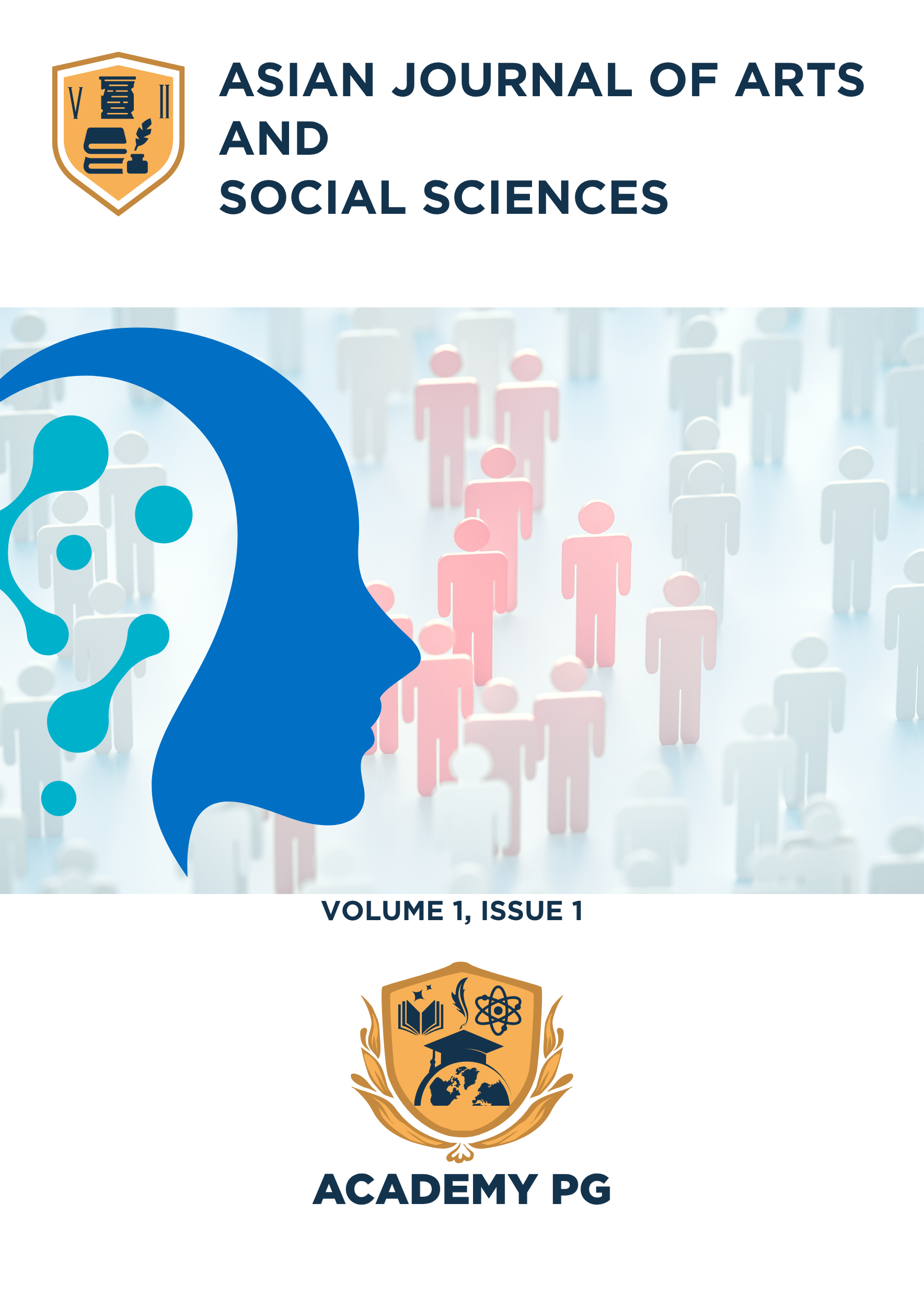Exploring the Socioeconomic and Emotional Effects of Divorce on Women in Savar: A Cross-Sectional Study
Keywords:
Divorce, Emotional Well-being, Women's lives, Marriage dissolution, psychological effects, Socioeconomic factorsAbstract
Background
Divorce is an increasingly visible phenomenon in both urban and rural parts of Bangladesh, yet its consequences especially on women remain understudied. In a society deeply rooted in patriarchy, divorced women often face not only emotional turmoil but also significant socioeconomic setbacks. Understanding these multidimensional impacts is essential to shaping supportive policy and community frameworks.
Objective
This study aimed to explore the socioeconomic and emotional consequences of divorce on women in the Savar region. It specifically focused on identifying the key challenges faced by divorced women in terms of employment, living arrangements, mental health, social stigma, and childcare responsibilities.
Method
A cross-sectional mixed-methods design was employed, combining quantitative surveys with qualitative interviews. Data were collected from 384 divorced women in the Savar area using structured questionnaires and in-depth interviews. Stratified purposive sampling was used to ensure diversity in age, education, and socioeconomic background. The data were processed using SPSS 27 and Microsoft Excel, with both descriptive and interpretive analysis applied.
Results
Findings revealed that a majority of respondents were young (20–29 years), had secondary-level education, and relied heavily on natal families or in-laws for post-divorce housing. Nearly half were employed, while a significant number remained housewives or engaged in low-paying jobs. Causes of divorce included family conflict, extramarital affairs, and lack of understanding. Emotional effects were profound, with over 85% reporting mental or social harassment. Children of divorced women were also significantly impacted, with reported difficulties in school performance, behavior, and legal documentation. Financial support primarily came from family (58.3%) and NGOs (16.7%).
Conclusion
Divorce imposes layered and long-lasting effects on women’s lives in Savar, affecting not only their financial independence but also their emotional stability and social standing. The study highlights the urgent need for integrated support systems including legal aid, mental health services, and economic empowerment initiatives targeted specifically at divorced women. Future research should further explore longitudinal outcomes and intervention strategies to mitigate post-divorce vulnerabilities.
References
[1]. Fine, M. A., Ferraro, A. J., & Russell, L. T. (2024). The Increasingly Global Nature of Divorce. Family Transitions, 65(3), 169–173. https://doi.org/10.1080/28375300.2024.2364547
[2]. Chokri Zehri, Latifa Saleh ben Ammar; Inequality and poverty in the shadow of global tensions. International Journal of Sociology and Social Policy 2025; https://doi.org/10.1108/IJSSP-01-2025-0054
[3]. Sawkia Afroz. (2019). The Rise of Divorce in Bangladesh: A Review in the Change of Marriage Dynamics. Social Sciences, 8(5), 261-269. https://doi.org/10.11648/j.ss.20190805.17
[4]. Bussemakers, C., van Oosterhout, K., Kraaykamp, G., and Spierings, N., “Women’s Worldwide Education-Employment Connection: A Multilevel Analysis of the Moderating Impact of Economic, Political, and Cultural Contexts,” World Development, vol. 99, pp. 28–41, 2017. doi:10.1016/j.worlddev.2017.07.002
[5]. Leopold T. (2018). Gender Differences in the Consequences of Divorce: A Study of Multiple Outcomes. Demography, 55(3), 769–797. https://doi.org/10.1007/s13524-018-0667-6
[6]. Chakraborty, S., Siddiqui, S.S. Female Labor Force Participation in Bangladesh and Neighboring Indian States. J Econ Race Policy 7, 201–220 (2024). https://doi.org/10.1007/s41996-024-00155-1
[7]. Sarker, P. K., Mandol, M. A., Ahmed, M., & Islam, M. Z. (2025). WOMEN’S ACCESS TO PROPERTY IN BANGLADESH. Journal of Asian and African Social Science and Humanities, 10(4), 24–47. https://doi.org/10.55327/jaash.v10i4.355
[8]. Chase-Lansdale, P. L., & Hetherington, E. M. (1990). The impact of divorce on life-span development: Short and long term effects. In P. B. Baltes, D. L. Featherman, & R. M. Lerner (Eds.), Life-span development and behavior, Vol. 10, pp. 105–150). Lawrence Erlbaum Associates, Inc.
[9]. Siddiqua, R., & Das, P. R. (2025). The Influence of Divorce on Women Empowerment in Bangladesh: An Exploratory Study. MBSTU Journal of Science and Technology, 11(2), 1-17. https://doi.org/10.69728/jst.v11.89
[10]. Kim, A., Jeon, S., & Song, J. (2023). Self-Stigma and Mental Health in Divorced Single-Parent Women: Mediating Effect of Self-Esteem. Behavioral sciences (Basel, Switzerland), 13(9), 744. https://doi.org/10.3390/bs13090744
[11]. R. Siddiqua and P. R. Das, “The Influence of Divorce on Women Empowerment in Bangladesh: An Exploratory Study”, J. Sci. Technol., vol. 11, no. 2, pp. 1–17, Aug. 2025, doi: 10.69728/jst.v11.89.
[12]. Badri, M., Alkhaili, M., Aldhaheri, H., Yang, G., Albahar, M., Yaaqeib, S., Alrashdi, A., & Alsawai, A. (2025). Starting over After Divorce: A Psychosocial Analysis of Emotional Distress, Social Disconnection, and Mental Well-Being Among Women in Abu Dhabi. Psychiatry International, 6(2), 69. https://doi.org/10.3390/psychiatryint6020069
[13]. Sanjida Nowshin Mou. (2024). Women’s Empowerment through Higher Education and Employment in Bangladesh. Journal of Gender, Culture and Society, 4(2), 39-66. https://doi.org/10.32996/jgcs.2024.4.2.6
[14]. Islam, Mohammad, Women's Empowerment in Bangladesh: A Case Study of Two NGOs (September 29, 2014). Bangladesh Development Research Working Paper Series BDRWPS 23, Available at SSRN: https://ssrn.com/abstract=2502890 or http://dx.doi.org/10.2139/ssrn.2502890
[15]. Gardner, K. (2024). Intimate Extractions: Demand dowry and Neoliberal development in Dhaka, Bangladesh. Development and Change, 55(1), 76–96. https://doi.org/10.1111/dech.12813
[16]. Leopold, T. Gender Differences in the Consequences of Divorce: A Study of Multiple Outcomes. Demography 55, 769–797 (2018). https://doi.org/10.1007/s13524-018-0667-6
[17]. Kalmijn, M., & van Groenou, M. B. (2005). Differential effects of divorce on social integration. Journal of Social and Personal Relationships, 22(4), 455-476. https://doi.org/10.1177/0265407505054516 (Original work published 2005)
[18]. Mamun, M. a. A., & Hoque, M. M. (2022). The impact of paid employment on women’s empowerment: A case study of female garment workers in Bangladesh. World Development Sustainability, 1, 100026. https://doi.org/10.1016/j.wds.2022.100026
[19]. Sawkia Afroz. (2019). The Rise of Divorce in Bangladesh: A Review in the Change of Marriage Dynamics. Social Sciences, 8(5), 261-269. https://doi.org/10.11648/j.ss.20190805.17
[20]. Akter, M., & Begum, R. (2012). Factors for Divorce of Women Undergoing Divorce in Bangladesh. Journal of Divorce & Remarriage, 53(8), 639–651. https://doi.org/10.1080/10502556.2012.725364
[21]. Miller, G. H. (2003). For better or for worse: Divorce reconsidered. American Journal of Psychiatry, 160(3), 601–602. https://doi.org/10.1176/appi.ajp.160.3.601-a
[22]. Sarker, M. R., Sarkar, M. a. R., Alam, M. J., Begum, I. A., & Bhandari, H. (2023). Systems thinking on the gendered impacts of COVID-19 in Bangladesh: A systematic review. Heliyon, 9(2), e13773. https://doi.org/10.1016/j.heliyon.2023.e13773
[23]. Amato, P. R. (2000). The consequences of divorce for adults and children. Journal of Marriage and Family, 62(4), 1269–1287. https://doi.org/10.1111/j.1741-3737.2000.01269.x
[24]. Javeria Saleem, Aroosa Khalil, Nazakat Jahan, Umbreen Fatima, & Prof. A.D Sajid Khan. (2025). Exploring the Level of Mental Health and Social Support among Divorced Women: Role of Age, Education and Socio-Economic Status. Review Journal of Social Psychology & Social Works, 3(1), 802–809. Retrieved from http://socialworksreview.com/index.php/Journal/article/view/148
[25]. Nadia Akhtar, Dr. Muhammad Ali Tarar, Sumaira Bano, Sharjeel Saleem, Ayesha Anwar, & Anam Zahra. (2024). Community Perception Regarding Socio-Economic Causes of Increasing Divorce among Females: A Sociological Study in District Muzaffar Garh. Research Journal of Psychology, 2(3), 200–221. https://doi.org/10.59075/rjs.v2i3.35
Downloads
Published
Issue
Section
License
Copyright (c) 2025 Asian Journal of Arts and Social Sciences

This work is licensed under a Creative Commons Attribution 4.0 International License.


